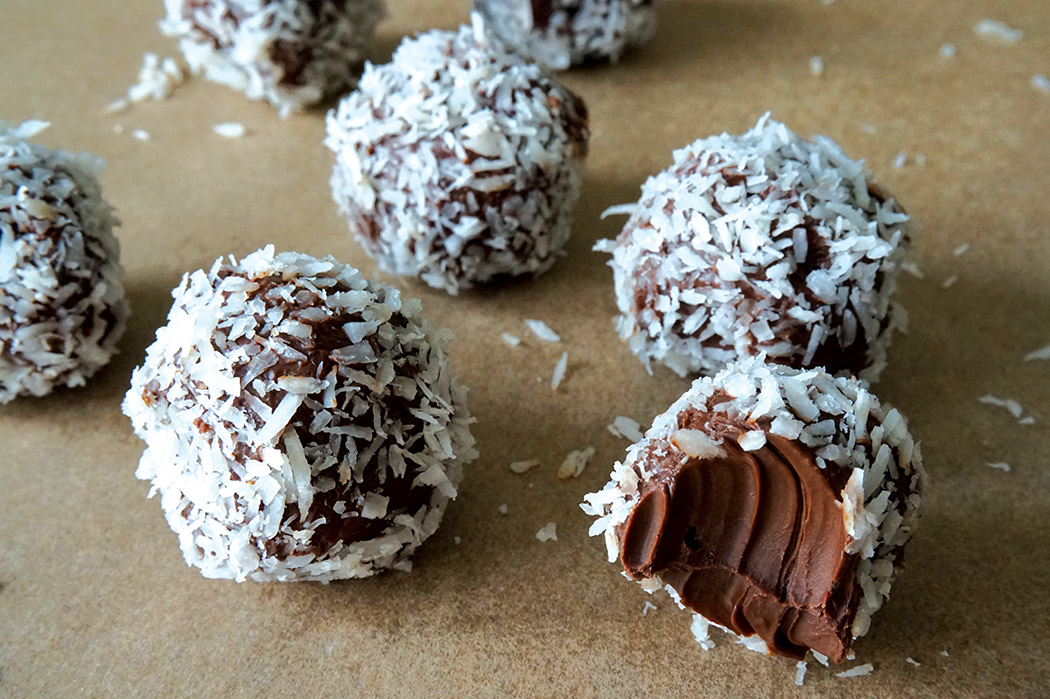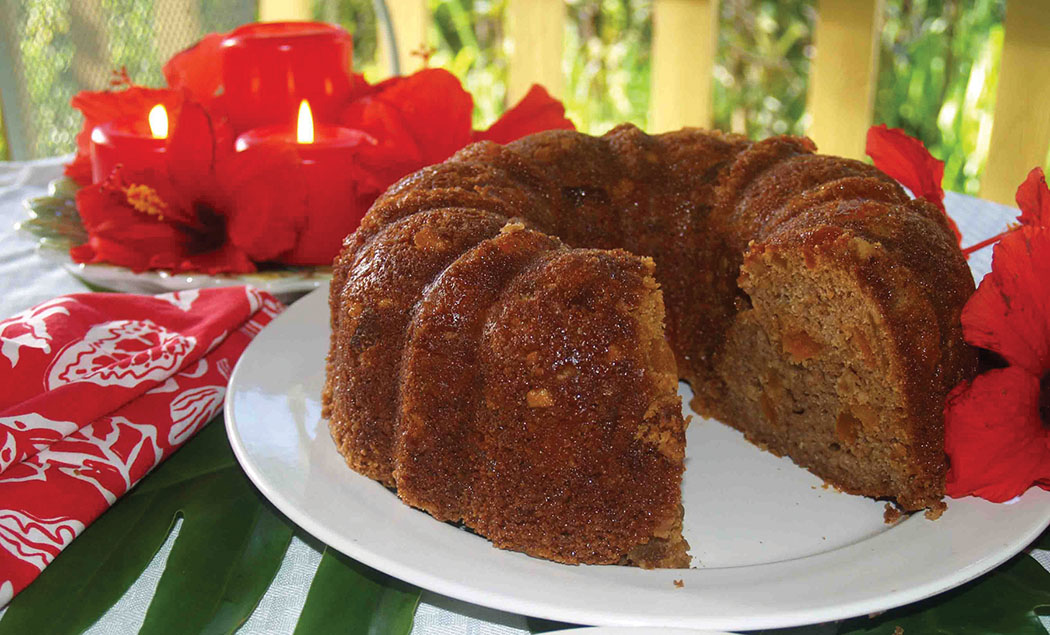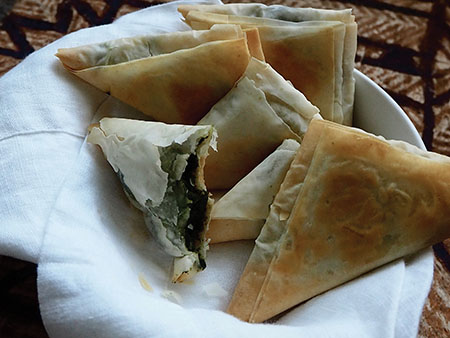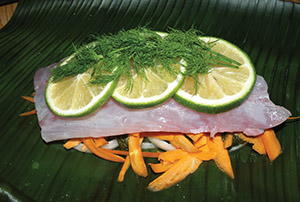
Hawaiian Grinds: Homemade ‘Ōpakapaka Laulau
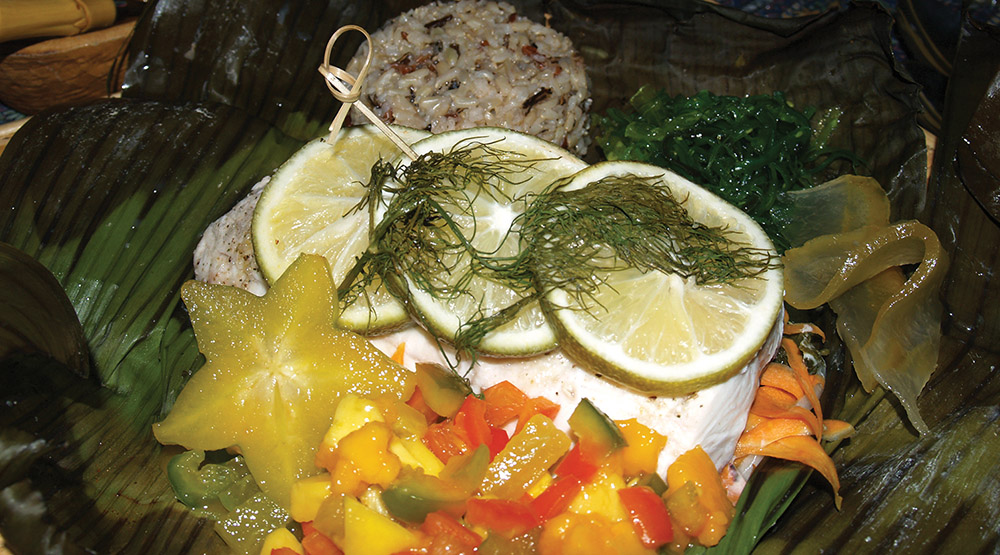 By Sonia R. Martinez
By Sonia R. Martinez
The early Hawaiians didn’t have any way of knowing they were in the vanguard of haute cuisine when they came up with the idea of making laulau.
The French cook ‘en papillote,’ the Italians ‘in cartoccio,’ and the Hawaiians make laulau—it sounds really fancy, and yet all it means is that the food is cooked in sealed packets made of parchment, brown paper bags, foil, or leaves.
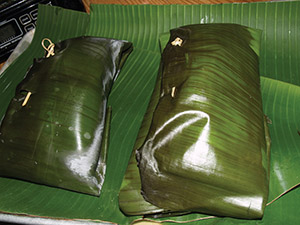 Cooking en papillote or sealed bags is one of the simplest and cleanest methods of cooking, yet considered very sophisticated by many a gourmand. Everything is either baked or steamed inside the sealed packets, where the main ingredient will be infused in its own flavorful liquids and the natural aromatic essence of the vegetables and seasonings used to complement it.
Cooking en papillote or sealed bags is one of the simplest and cleanest methods of cooking, yet considered very sophisticated by many a gourmand. Everything is either baked or steamed inside the sealed packets, where the main ingredient will be infused in its own flavorful liquids and the natural aromatic essence of the vegetables and seasonings used to complement it.
Since it requires little or no additional fat besides the fat already present in the meat or fish selected, it is a healthier method of preparing food.
At many avant-garde restaurants as well as in local Hawaiian ‘grinds’ eateries, food is served in the packets, letting the diner experience the pleasure of unwrapping their food and catching that first whiff of delicious goodness.
In old Hawai‘i, laulau would be placed in an imu, or underground oven. Lava rocks were heated in fire until they turned white, covered in banana leaves, then laulau were placed on top, covered in more banana leaves, and buried by white-hot lava rocks once again. This would steam the laulau and be ready to eat after a few hours.
Today, a regular oven, bamboo steamer, or a slow cooker (crock pot) work well.
For my laulau I selected the delicious tasting pink snapper or as it is known in Hawai‘i, ‘ōpakapaka, for its moist white, firm yet flaky texture when cooked. I also like that it is not a fishy tasting fish. It has a delicate, clean, natural sweetness that accepts and pairs well with the taste of the other ingredients.
Although the waters around the Hawaiian Islands were being overfished for ‘ōpakapaka in the not too distant past, the population has been increasing steadily, and with careful management and pono fishing practices, they will remain available for our nourishment and enjoyment for, hopefully, far into the future.
Ogo and limu are popular seaweeds that can serve as vegetables or as condiments in a variety of dishes and are an important source of minerals, and vitamins such as A, C, B12, and riboflavin.
The food can be wrapped in taro, banana, or ti leaves for baking or steaming. If none of the leaves are available to you, parchment or foil can be substituted. Taro leaves may be eaten after cooking; banana or ti leaves are not edible. Sometimes you can find banana leaves, already cut in squares or rectangular pieces in the markets. Steaming or baking foods wrapped in banana or ti leaves imparts a subtle pleasant flavor to the food.
‘Ōpakapaka and Vegetable Laulau
 ‘Ōpakapaka fillet (1 per person)
‘Ōpakapaka fillet (1 per person)
Maui sweet onion slices (2–3 per serving)
Fresh baby spinach, slightly wilted (ogo or limu can be used)
Carrot, thin julienne or ‘shaved’ with a vegetable peeler
Fresh ginger, minced
Fresh garlic, minced
Lime juice
Hawaiian sea salt
White peppercorns, freshly ground
Lime, thinly sliced (2–3 per serving)
Fresh dill sprig (1 per serving)
Taro, banana, or ti leaves
Prepare the leaves by getting rid of the spine or stalk first, then trim, if needed. If using banana leaves, cut to size needed and trim into a square or rectangle. Place the sections of banana leaves in the oven at 350 F for just one minute to make them pliable.
If using ti leaves you need three placed over each other forming a six-pointed star per serving. When ready to close up, bring each leaf over the food to the top over the filling.
Put the taro/banana leaf or ti leaves on the counter and place 2–3 overlapping onion slices in the middle. Add spinach and carrots. Top with the filet of fish. Sprinkle with the ginger, garlic, lime juice, sea salt, and pepper. Then top with lime slices and dill sprig.
Fold the leaves over the food and wrap the bundle well, leaving no openings; tie with kitchen string or pin with toothpicks or thin bamboo skewers. Place in bamboo steamer over boiling water and steam for about 15–20 minutes or on a tray in the oven at 350 F for about 20-30 minutes. It depends on thickness of the fish filet.
Serve with Tropical Salsa.
Tropical Salsa
Peel, seed or core and chop fresh mango, papaya, pineapple, sweet Maui onion, minced young ginger, chopped red-hot Hawaiian chili peppers, and red and green bell peppers in ¼ inch pieces. Add fresh squeezed lime juice, sea salt, a smidgen of sugar and the juice from liliko‘i, chopped fresh mint leaves and/or fresh chopped cilantro (optional).
Mix and refrigerate at least 2 hours before serving.
Photo by Sonia R. Martinez
Contact writer Sonia R. Martinez: SoniaTastesHawaii.com
